Review of Barefoot Gen / Barefoot Gen 2
Introduction
Barefoot Gen
Gen Nakaoka has a pretty run of the mill childhood, considering he is growing up in wartime Japan. He lives with his parents, elder sister Eiko and younger brother Shinji. His father`s pacifist views are unpopular, despite the fact that Japan is on the back foot and losing to the allies. Because of this, their family is unpopular and rations are hard to come by. Gen`s mother is pregnant and Gen and Shinji are as equally concerned about her health as they are finding food for their own empty bellies, but the scarcity of food and regular air raids do little to keep the family`s spirits low. Then at 8:15 in the morning of the 6th of August 1945, a solitary B29 Flying Fortress appears in the skies above Gen`s hometown of Hiroshima.
Barefoot Gen 2
Three years have passed since the end of the war. Gen, his mother and his adopted brother Ryuta are trying to rebuild their lives in the shattered ruins of Hiroshima, scrabbling in the ruins for scrap metal to sell, trying to earn enough money to buy food to stave off starvation. Gen is still going to school, although school has to stop whenever there is a rain shower. One day he meets a bunch of homeless children living in the city, trying to avoid being carted off to a state orphanage. The school doesn`t accept orphans, and when Gen sees the way they are treated, he stands up for them. Together they build a home for the orphans, and find a semblance of normality in their lives. However, the legacy of that horrific day three years ago hasn`t yet finished with Gen`s family.
Writer Keiji Nakazawa grew up in Hiroshima and was six years old when the allies dropped the first atomic bomb. Barefoot Gen is the autobiographical account of his experiences, brought to harrowing life in these animated films.
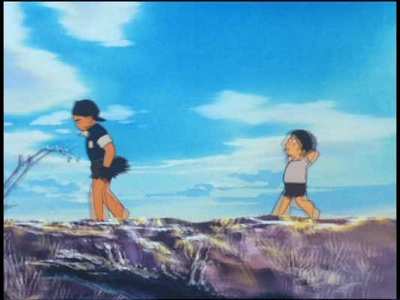
Video
Both the Barefoot Gen movies are presented on a dual layer disc in a 4:3 regular format. The films were made in 1983 and `86 respectively, and the cel animation is of an older, more simplistic style. The design of the city and its environs are rich and detailed however. The visuals are stunningly effective in relating the atomic blast and the torment it wreaks on the inhabitants of Hiroshima. The animation and characters are stylised but the event is no less shocking for that, and the animation pulls no punches in conveying the utter horror and brutality of the destruction.
The transfer itself is generally of good quality. Print damage is almost non-existent and the image is sharp and well defined throughout, with the colours as strong and consistent as any other hand coloured cel-animation. There were a couple of moments of minor pixellation though, especially when the screen had to convey complex motion, like a rain shower for instance.

Audio
The sound is a simple DD 2.0 Japanese track, accompanied by optional English subtitles. The sound is clear and reproduced well, if centrally focused. I did notice the odd moment of crackle during the quieter moments.

Features
I received only the test disc, minus any packaging, so all I could find was a brief promo for the War Child charity. According to retail sites, there should be a 16-page booklet with the disc, containing interviews with Keiji Nakazawa and an essay by Jonathan Clements.
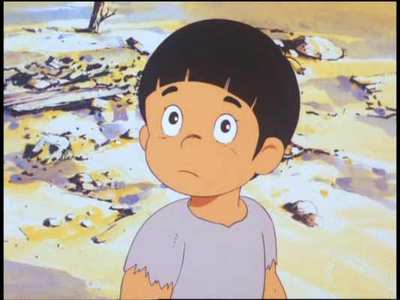
Conclusion
It has been 60 years since the Second World War ended so decisively with the atomic bombs dropped on Hiroshima and Nagasaki. On the 6th of August 1945, the Enola Gay dropped Little Boy over Hiroshima. At 8:15 am, that single uranium warhead destroyed over 200,000 lives, and ushered in a new era of world history. I grew up in the Cold War with the two superpowers engaged in a nuclear brinkmanship barely mitigated by the threat of Mutually Assured Destruction. While the Americans had `duck and cover`, we had public information films instructing us on the construction of a nuclear bunker in our cellar with a handy pile of bricks and a sturdy door. While governments continued their insanity, the anti nuclear movement flourished, warning the world of the sheer madness of using these weapons that would not only kill everyone, but also render the world uninhabitable in the process. Post-apocalyptic fiction and movies also were produced in vast amounts, but somehow most of these films and warning seemed diluted, oddly second hand. Most anti-nuclear propaganda used footage from the Pacific tests, and there are only so many mushroom clouds one can see before becoming jaded.
Barefoot Gen is wholly different. It isn`t just a warning, but a lesson from history. The fact that this all happened, that the creator of the film actually lived through the Hiroshima attack, gives the film a weight that other similar films lack.
The first film is the certainly most striking. We are introduced to Gen and his family as they eke out a living in wartime Hiroshima. It`s a lengthy introduction that lets us get to know all the characters and begin to empathise with their plight, as food becomes scarce and living day to day becomes harder. As a viewer the spectre of the impending atomic bomb weighs heavily over the proceedings, and my heart skipped a beat with every successive air raid that the family had to shelter from. By the time the bomb is dropped, the family had been developed in the narrative and despite knowing what would eventually happen, it came as no less of a shock. The atomic explosion and its results are depicted with horrific intensity. This isn`t a film to pull its punches in that regard, and seeing the effects of the blast on the inhabitants of Hiroshima is gut wrenching. The initial flash incinerated those close to ground zero, those further away suffered horrific burns, their eyes melted from their sockets, skin burnt away. After that, the blast effects of the explosion tore through what remained of the city, shredding the buildings left standing through the outskirts. Those shown to survive this attack are rendered as wraiths, as the living dead as they stalk blinded, through the burning ruins. Afterwards, the longer-term effects of the bomb become apparent, as fallout and radiation wreak havoc on the survivors, and also on the relief efforts sent in to render aid. The film doesn`t merely act as a clinical representation of the bomb`s effects or as a tally of the dead, but tells a forcefully personal tale from Gen`s point of view. From him we learn of the initial toll the bomb takes on his family, and his attempt to care for the survivors. We feel the effects of the attack as personally as he does, as he encounters the victims and sees the devastation for himself.
The second film is emotionally stronger than the first, but certainly not as intense. It`s concerned with the aftermath of the attack; set three years after the first film. It`s more about healing and rebuilding, although the effects of the bomb are still felt and are far-reaching. Gen is still living with what`s left of his family in the ruins of Hiroshima, and food is as scarce as ever. In many respects, this film is similar to many tales of the disowned and disaffected in every war, with its tale of street urchins and orphans banding together to rebuild their lives in the face of adversity a more familiar one.
Barefoot Gen shies away from the politics of the war, remaining centred on the personal story that resonates so powerfully. Scarce mention is made of the Japanese aggression of World War II. Although Gen`s father disapproves of their leaders insistence on defiance in the face of certain defeat, little is said about the reason behind the aggression. Similarly, nothing is said about the American decision to use the A-bomb, and it isn`t until Barefoot Gen 2 that there is any resentment towards the conquerors, and even that is at the American lack of respect to the survivors. In fact the message of Barefoot Gen is painfully obvious, that the only victims of war are the innocents, and that anyone who`d contemplate using a nuclear weapon must be absolutely psychopathic.
I had once thought with the end of the Cold War, the nuclear madness that threatened the world would end. But now the fear is of rogue states, of terrorists with suitcase bombs, and where the world`s one remaining superpower insists on retaining a nuclear deterrent, but fails to mention just who is left to deter. In this brave new world, Barefoot Gen retains a powerful role in warning just what these weapons do to the lives of innocents. The narrative may not be strong, but when relating history that becomes less relevant. Both the Barefoot Gen films are powerful, moving and terrifying indictments of man`s inhumanity to man. Understandably, there is a strong emotional core to the films, a thread of triumph against horrific adversity, and the story would make for painful viewing indeed if the viewer weren`t offered a sliver of hope. I`d defy anyone not to be moved by these films, they teach a harsh lesson, but it`s a lesson that needs to be learned over and over. These films are absolutely essential viewing.
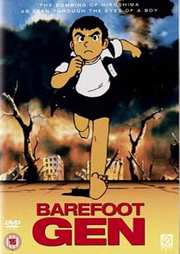

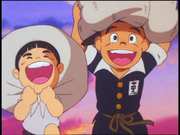
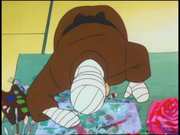

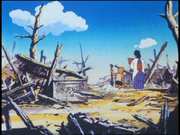

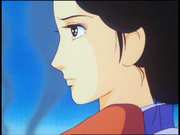
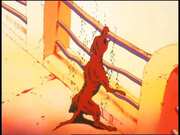
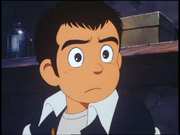
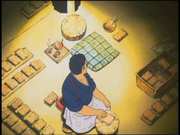
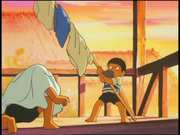
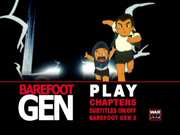
































Your Opinions and Comments
Be the first to post a comment!